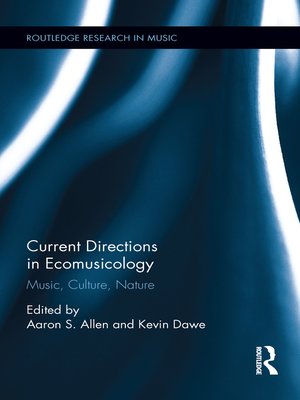Current Directions in Ecomusicology
ebook ∣ Music, Culture, Nature · Routledge Research in Music
By Aaron S. Allen

Sign up to save your library
With an OverDrive account, you can save your favorite libraries for at-a-glance information about availability. Find out more about OverDrive accounts.
Find this title in Libby, the library reading app by OverDrive.



Search for a digital library with this title
Title found at these libraries:
| Library Name | Distance |
|---|---|
| Loading... |
AWARD WINNER OF THE 2018 SOCIETY OF ETHNOMUSICLOGY ELLEN KOSKOFF PRIZE
This volume is the first sustained examination of the complex perspectives that comprise ecomusicology—the study of the intersections of music/sound, culture/society, and nature/environment. Twenty-two authors provide a range of theoretical, methodological, and empirical chapters representing disciplines such as anthropology, biology, ecology, environmental studies, ethnomusicology, history, literature, musicology, performance studies, and psychology. They bring their specialized training to bear on interdisciplinary topics, both individually and in collaboration. Emerging from the whole is a view of ecomusicology as a field, a place where many disciplines come together. The topics addressed in this volume—contemporary composers and traditional musics, acoustic ecology and politicized soundscapes, material sustainability and environmental crisis, familiar and unfamiliar sounds, local places and global warming, birds and mice, hearing and listening, biomusic and soundscape ecology, and more—engage with conversations in the various realms of music study as well as in environmental studies and cultural studies. As with any healthy ecosystem, the field of ecomusicology is dynamic, but this edited collection provides a snapshot of it in a formative period. Each chapter is short, designed to be accessible to the nonspecialist, and includes extensive bibliographies; some chapters also provide further materials on a companion website: http://www.ecomusicology.info/cde/. An introduction and interspersed editorial summaries help guide readers through four current directions—ecological, fieldwork, critical, and textual—in the field of ecomusicology.







